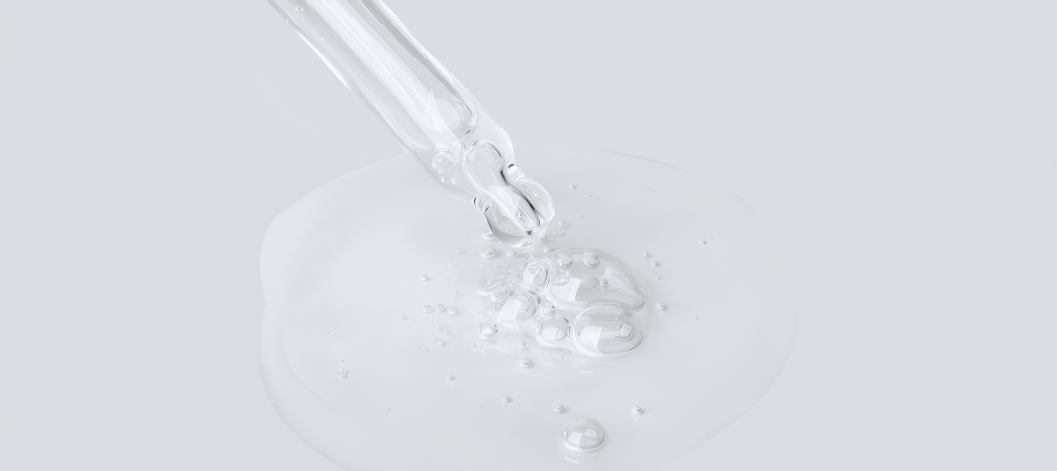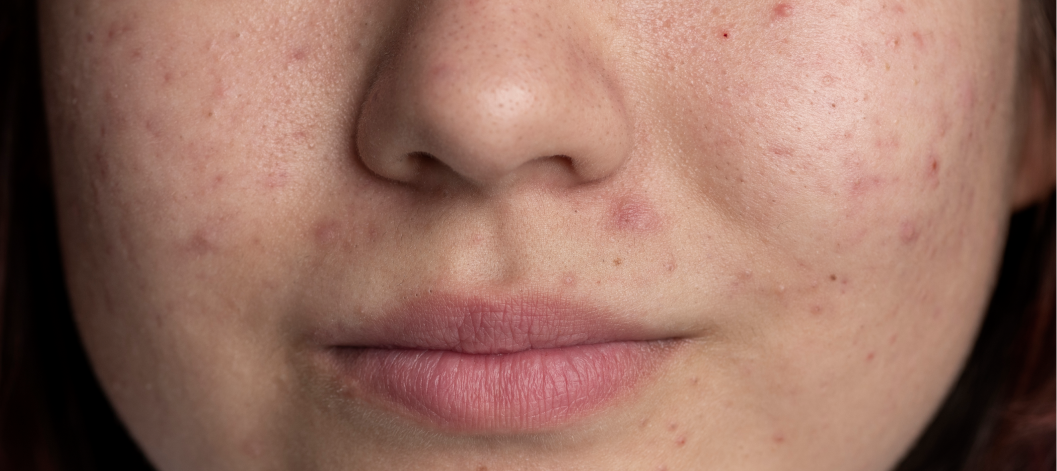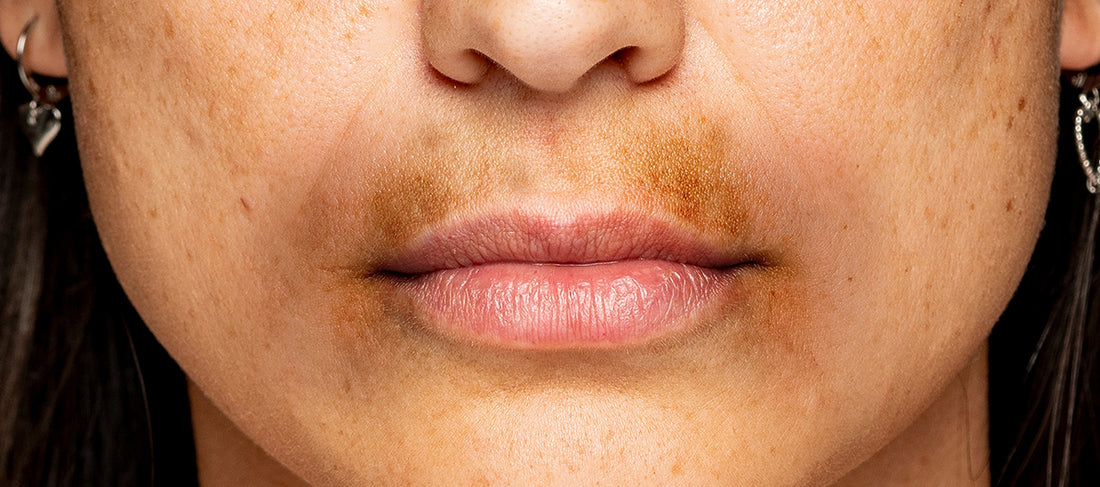Achieving a brighter, more even skin tone often involves addressing the production of melanin, the pigment responsible for skin colour.
While melanin plays a crucial role in protecting your skin from sun damage, excess melanin production can lead to dark spots, uneven tone, and hyperpigmentation.
In this post, we will explore top skincare ingredients, simple dietary tips and natural vitamins and supplements that help minimise pigmentation and enhance your skin's natural glow.
What is melanin?
It is a pigment produced by our body that influences variations in skin tones, hair colours and eye shades. Melanin is produced by cells called melanocytes, located in the skin’s outer layer.
The amount and type of melanin you produce are largely determined by genetics, but factors like sun exposure, certain topical skincare ingredients and dietary preferences can highly influence melanin production.
How to reduce melanin in face: effective tips and treatments
To effectively reduce melanin in the skin, incorporating ingredient-based solutions along with a targeted skincare routine can help block the enzyme responsible and gradually lighten pigmentation.
To begin with, it is essential to target the process of melanin production at the cellular level.
This process, known as melanogenesis, involves the enzyme ‘tyrosinase’, which plays a crucial role in converting the amino acid tyrosine into melanin.
By inhibiting tyrosinase activity, you can effectively reduce melanin production, leading to a lighter skin tone over time.
1. Topical skin care ingredients that help reduce melanin in skin
When exploring how to reduce melanin in face, consider integrating both topical treatments featuring these key ingredients with the following tips -
Glycolic acid
It works by breaking down the bonds between dead skin cells on the surface, facilitating their removal.
This process, known as desquamation, is crucial in reducing hyperpigmentation as the outermost layer of skin often contains excess melanin.
By accelerating the shedding of pigmented cells, Glycolic Acid gradually reveals newer, less pigmented skin beneath, promoting a more even skin tone over time.
Niacinamide
This versatile ingredient is effective in reducing the transfer of melanin to the skin's surface.
By interfering with the process of melanin distribution, Niacinamide helps to even out skin tone and diminish hyperpigmentation, contributing to a more uniform complexion.
Vitamin C
As a potent antioxidant, Vitamin C not only helps to inhibit tyrosinase but also promotes collagen production.
This dual action reduces pigmentation and brightens the skin, and improves skin firmness.
Retinol
Known for its ability to enhance cell turnover, Retinol accelerates the shedding of pigmented skin cells and promotes the growth of fresh, lighter skin underneath.
This helps to reduce the appearance of dark spots and uneven pigmentation.
Kojic Acid
Derived from fungi, Kojic Acid is known for its skin-brightening properties. It inhibits tyrosinase, the enzyme responsible for melanin production, thereby reducing pigmentation and fading dark spots.
Kojic Acid is widely used in skin care products to treat conditions like hyperpigmentation and melasma.
Azelaic Acid
Found naturally in grains like barley and wheat, Azelaic Acid works to inhibit tyrosinase, reducing abnormal melanin production.
It is especially effective for treating hyperpigmentation and post-inflammatory pigmentation caused by acne or other skin conditions.
Alpha Arbutin
A naturally occurring derivative of hydroquinone, Alpha Arbutin works by inhibiting tyrosinase activity, which leads to a reduction in melanin synthesis.
It is considered a safer alternative to hydroquinone and is commonly used to treat dark spots, age spots, and overall uneven skin tone.
Licorice Extract
Known for its anti-inflammatory and brightening properties, Licorice contains glabridin, a compound that inhibits tyrosinase activity.
This helps reduce melanin production and soothes the skin, making it suitable for sensitive skin types.
2. Protect your skin from UV exposure
Excessive or repeated sun exposure can lead to uneven melanin distribution, resulting in hyperpigmentation issues such as dark spots, freckles or melasma.
This occurs because UV rays can trigger overproduction of melanin in certain areas.
Regular use of broad-spectrum sunscreen with SPF 50 helps prevent UV-induced melanin production, reducing the risk of blemishes and hyperpigmentation.
3. Exfoliation
In areas of hyperpigmentation, exfoliation helps with the removal of dead skin cells, which contain excess melanin concentration.
Exfoliants such as AHAs (alpha hydroxy acids) penetrate deep into the skin, interfering with melanin production and gradually reducing the appearance of dark spots.
4. Use hydrating and barrier-strengthening products
Incorporate moisturisers that contain Ceramides and humectants like glycerine or Hyaluronic Acid.
These ingredients help maintain a strong skin barrier and keep your skin hydrated, which can
reduce the appearance of pigmentation and support overall skin health.
Natural ways to reduce melanin: dietary and vitamin-rich solutions
When addressing how to reduce melanin naturally, consider integrating the following dietary and vitamin-rich elements that can naturally work towards reducing melanin levels and achieving a balanced skin tone.
1. Foods rich in antioxidants
Antioxidants play a crucial role in neutralising free radicals, which are unstable molecules that can damage skin cells and stimulate melanin production.
Key foods to consider:
- Citrus Fruits: Oranges, lemons, and grapefruits are rich in vitamin C, an antioxidant that helps reduce melanin and brighten the skin.
- Berries: Blueberries, strawberries, and raspberries are loaded with antioxidants that protect the skin from oxidative stress and reduce pigmentation.
- Nuts: Almonds and walnuts provide vitamin E, which supports skin health and inhibits melanin production.
- Green Leafy Vegetables: Spinach, kale, and broccoli are packed with vitamins and antioxidants that limit melanin stimulation and improve skin health.
- Lycopene-Rich Foods: Lycopene is a natural antioxidant found in certain fruits and vegetables that can help reduce melanin naturally and protect the skin from UV damage.
Foods high in lycopene include:
-
Tomatoes: Tomatoes and tomato-based products are excellent sources of lycopene.
- Watermelon: This refreshing fruit is another great source of lycopene, which helps minimise melanin concentration and protects the skin from environmental stressors.
-
Soy Products: Soy contains isoflavones, plant compounds that can help reduce melanin production and improve skin tone. Adding soy products to your diet, such as tofu, soy milk and edamame, minimise melanin pigment transfer promoting skin lightening and a more even complexion.
2. Reduce melanin naturally with vitamins and supplements
Vitamins and supplements offer a range of benefits from neutralising free radicals to inhibiting enzymes involved in melanin synthesis.
For a natural approach to how to reduce melanin in skin, focus on incorporating specific vitamins and supplements into your routine that help lighten pigmentation and enhance skin tone.
Listed below are essential nutrients and how they help to reduce melanin naturally -
Glutathione
It is a powerful antioxidant that plays a role in inhibiting melanin synthesis. Glutathione shifts the production of melanin from darker eumelanin to lighter pheomelanin, resulting in a lighter skin tone.
Glutathione also reduces oxidative stress by neutralising free radicals, which can otherwise stimulate increased melanin production as a protective response. It helps impart a lighter skin tone and improved complexion.
Zinc PCA
It helps in balancing melanin levels by acting as a cofactor for enzymes involved in DNA repair and skin regeneration, which is vital for maintaining healthy skin.
It also supports wound healing and promotes cell turnover, aiding the skin in shedding damaged, pigmented cells.
Vitamin E
Vitamin E protects the skin from oxidative stress caused by free radicals. This protection helps to prevent an increase in melanin production.
Vitamin E supplements and topical products can help maintain healthy, evenly-toned skin by reducing the impact of environmental stressors.
















